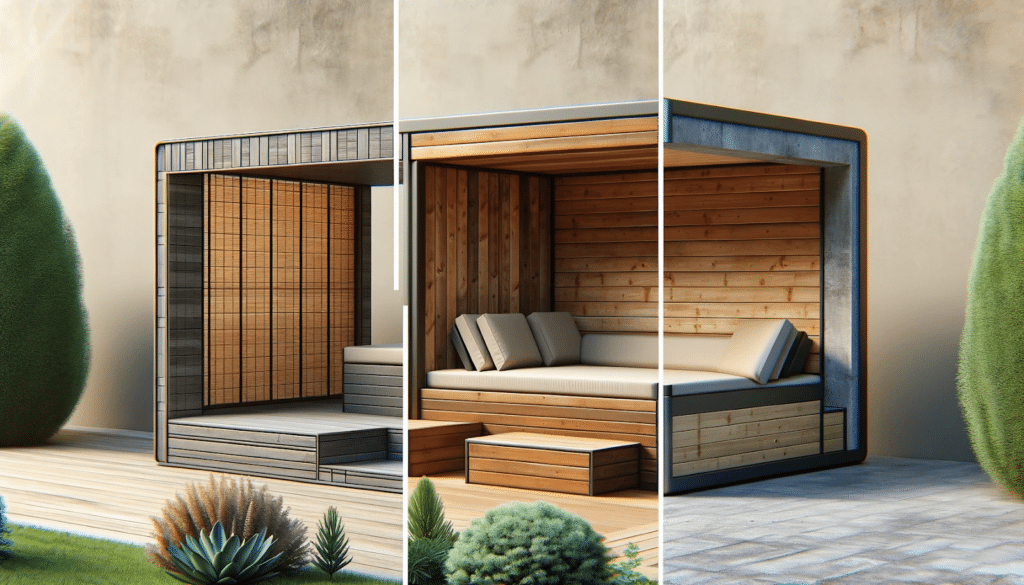Spa In Calgary | When selecting a spa, particularly in Calgary’s unique climate, the choice of structural material is crucial. The frame of your hot tub impacts its durability, maintenance needs, and overall longevity. Here, we compare three common materials used in spa construction: composite, wood, and steel. Each has its own advantages and disadvantages, so understanding these can help you make an informed decision for your perfect spa experience.
The Importance of Choosing the Right Frame
Before diving into the specifics of each material, it’s essential to understand why the frame of your spa is so important. The frame serves as the skeleton of your hot tub, providing the necessary support for the shell, plumbing, and all mechanical components. A sturdy frame ensures the longevity and structural integrity of your spa, which is especially important in Calgary, where weather conditions can be harsh and variable.
Composite Frames
Composite frames are a relatively recent innovation in spa construction. Made from high-strength plastic materials, these frames offer several advantages over traditional wood and steel.
Advantages
- Durability: Composite materials are highly resistant to rot, decay, and insect damage. This makes them ideal for the damp environment typical of a spa.
- Low Maintenance: Unlike wood, composite frames do not require regular staining or sealing. They are also resistant to warping and cracking.
- Lightweight: Composite materials are generally lighter than wood or steel, making the spa easier to transport and install.
- Eco-Friendly: Many composite materials are made from recycled products, making them a more environmentally friendly option.
Disadvantages
- Cost: Composite frames can be more expensive upfront compared to wood. However, the reduced maintenance costs can offset this over time.
- Aesthetics: While composites can mimic the look of wood, some purists prefer the natural appearance of real wood.
Wood Frames
Wood has been used in spa construction for decades, and its natural look and feel remain appealing to many spa owners.
Advantages
- Aesthetic Appeal: Wood provides a classic, natural look that many people find attractive.
- Insulation: Wood has natural insulating properties, which can help maintain the water temperature in your spa.
- Strength: High-quality wood, such as cedar or redwood, can provide excellent structural support and durability.
Disadvantages
- Maintenance: Wood requires regular maintenance, including staining, sealing, and inspecting for rot and insect damage.
- Susceptibility to Elements: In Calgary’s climate, wood can warp, crack, or decay over time due to exposure to moisture and temperature fluctuations.
- Weight: Wood is heavier than composite materials, which can make installation and transportation more challenging.
Steel Frames
Steel frames offer a modern alternative to wood and composite, with their own set of unique benefits and challenges.
Advantages
- Strength: Steel is incredibly strong and can support significant weight, ensuring the longevity and stability of your spa.
- Durability: Steel frames are resistant to pests and do not rot, making them a good option for long-term durability.
- Weather Resistance: With proper coating and maintenance, steel can withstand harsh weather conditions, including Calgary’s cold winters.
Disadvantages
- Corrosion: Steel can rust if not properly coated and maintained. This requires regular inspection and maintenance to prevent corrosion.
- Weight: Steel is the heaviest of the three materials, which can complicate transportation and installation.
- Heat Conductivity: Steel conducts heat, which can lead to increased energy costs as it transfers heat away from the spa.

Comparative Analysis: Which Frame is Best for Your Spa?
Choosing between composite, wood, and steel for your spa frame depends on several factors, including your budget, aesthetic preferences, and willingness to perform maintenance.
Durability and Maintenance
For those seeking a low-maintenance and durable option, composite frames are the clear winner. They resist the common issues associated with wood and steel, such as rot, warping, and corrosion. However, if you prefer the traditional look and feel of wood, be prepared for the ongoing maintenance it requires.
Aesthetic and Environmental Impact
Wood remains the top choice for those who prioritize natural aesthetics and insulation properties. However, if you are environmentally conscious, composite materials made from recycled products offer a more sustainable option.
Strength and Longevity
Steel frames are unmatched in terms of strength and longevity, provided they are adequately protected from rust. They are particularly suitable for large spas or installations requiring substantial structural support.
Conclusion
When selecting the right frame for your spa in Calgary, consider your priorities in terms of durability, maintenance, aesthetic appeal, and environmental impact. Composite frames offer excellent durability with minimal maintenance, wood provides natural beauty and insulation, and steel delivers unmatched strength and longevity. Each material has its unique advantages, and your choice will ultimately depend on your specific needs and preferences. Make an informed decision to ensure your spa remains a relaxing and enjoyable retreat for years to come.
